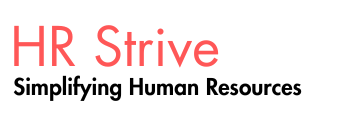All industries, organizations, brands, and products pass through identifiable stages of a life cycle—starting from inception, progressing through growth, reaching maturity, and eventually facing renewal or decline. While the terminology may vary, the core idea remains: success typically rises over time, peaks, and then either transforms or tapers off.
For HR professionals—particularly those in leadership roles—understanding these stages is crucial. As an organization or product moves through its life cycle, priorities shift, strategic goals evolve, and talent requirements change. HR must anticipate these transitions and proactively adjust its strategy and operations to remain aligned and effective.
Importantly, the organizational or product life cycle is distinct from the employee life cycle, which follows an individual’s journey from recruitment through exit.
Life Cycle Stages and Strategic HR Alignment
1. Introduction Stage
At this early phase, market awareness is low, and revenues are modest. The organization is still establishing its identity and value proposition. Customer skepticism and resistance to change are common barriers. Success at this stage requires bold vision, entrepreneurial energy, and business insight.
-
HR Priorities:
-
Building the foundational team through strategic talent acquisition.
-
Helping shape and articulate the emerging organizational culture.
-
Managing basic HR compliance and risk without formal infrastructure.
-
In many cases, HR functions may be outsourced or handled directly by founders or senior executives.
-
2. Growth Stage
As brand recognition increases and demand rises, revenue grows—though the rate varies by industry and offering. The challenge is to scale up operations while preserving innovation and agility.
-
HR Priorities:
-
Expanding and developing talent to support growing operations.
-
Introducing structure, policies, and job clarity without undermining the organization’s dynamic culture.
-
Supporting leadership evolution as founders share responsibility and develop new managers.
-
Managing the change process as formalization increases.
-
3. Maturity Stage
In this stage, the organization is established, but market competition is fierce. Growth becomes harder to achieve, requiring either new customer segments, innovative offerings, or acquisitions. Decision-making may become slower due to complex structures, and bureaucracy may creep in.
-
HR Priorities:
-
Sustaining a high-performing workforce through retention, learning, and succession planning.
-
Reinforcing culture and values through consistent policies and practices.
-
Facilitating internal communication to ensure alignment with strategic goals.
-
Promoting agility and innovation despite increased formalization.
-
Acting as a strategic advisor on productivity challenges, organizational health, and workforce trends.
-
4. Renewal Stage
To remain competitive, organizations may need to reimagine their core business—whether through new products, markets, or business models. This period demands vision, decisive leadership, and bold change.
-
HR Priorities:
-
Restructuring teams and redefining roles to support new directions.
-
Managing workforce reduction or reallocation with empathy and transparency.
-
Streamlining HR processes to support agility.
-
Attracting and developing talent aligned with emerging priorities.
-
5. No Growth Stage
Growth stagnates, and both revenue and headcount remain flat or decline. Limited career opportunities and constrained budgets become pressing issues.
-
HR Priorities:
-
Maintaining morale and engagement despite limited advancement potential.
-
Navigating turnover while operating with fewer resources.
-
Finding innovative, low-cost ways to deliver HR services.
-
6. Decline Stage
The organization contracts in size and scope. Conflict may increase, and leadership may adopt a more centralized, autocratic approach. Without intervention, the ability to compete or operate may erode entirely.
-
HR Priorities:
-
Managing downsizing with sensitivity and legal compliance.
-
Supporting employees through constant change and uncertainty.
-
Securing mission-critical talent under resource constraints.
-
Promoting well-being and stress management during organizational instability.
-
Case in Point: The Landline Phone Industry
Take the example of landline telephone manufacturing. Once an emerging technology, the market grew as infrastructure and consumer understanding expanded. Eventually, however, innovation slowed, and competition from mobile technology led to steep declines in demand. Companies that failed to pivot to wireless or internet-based communication found themselves in shrinking, low-profit markets.

No comments:
Post a Comment